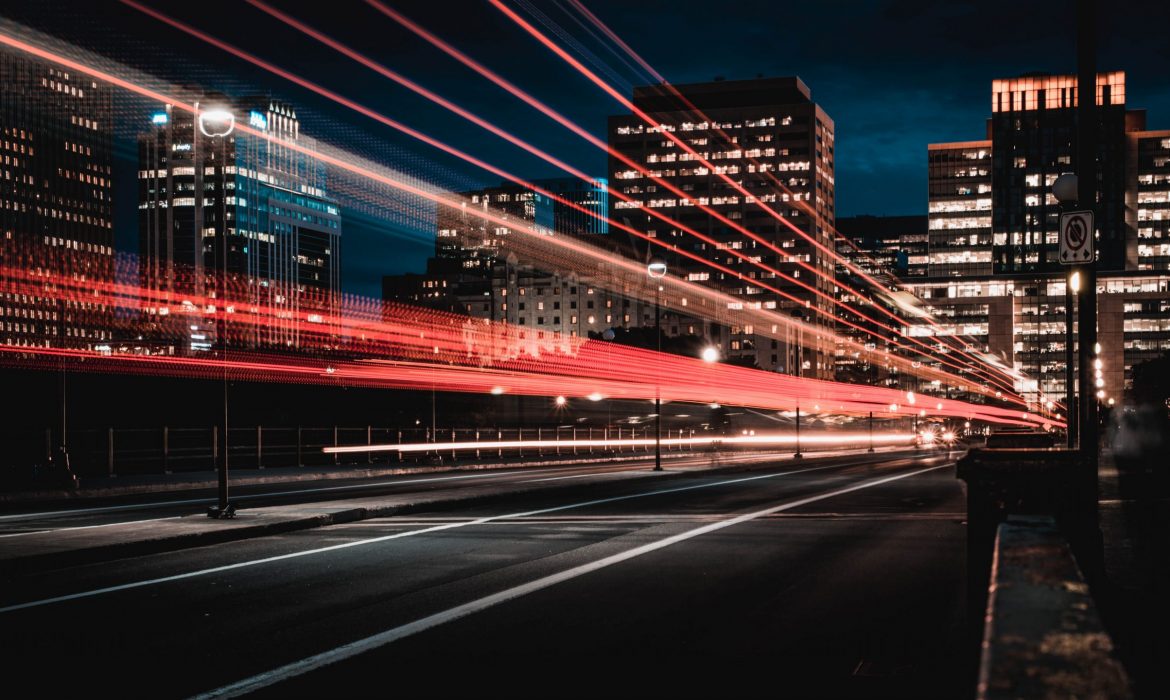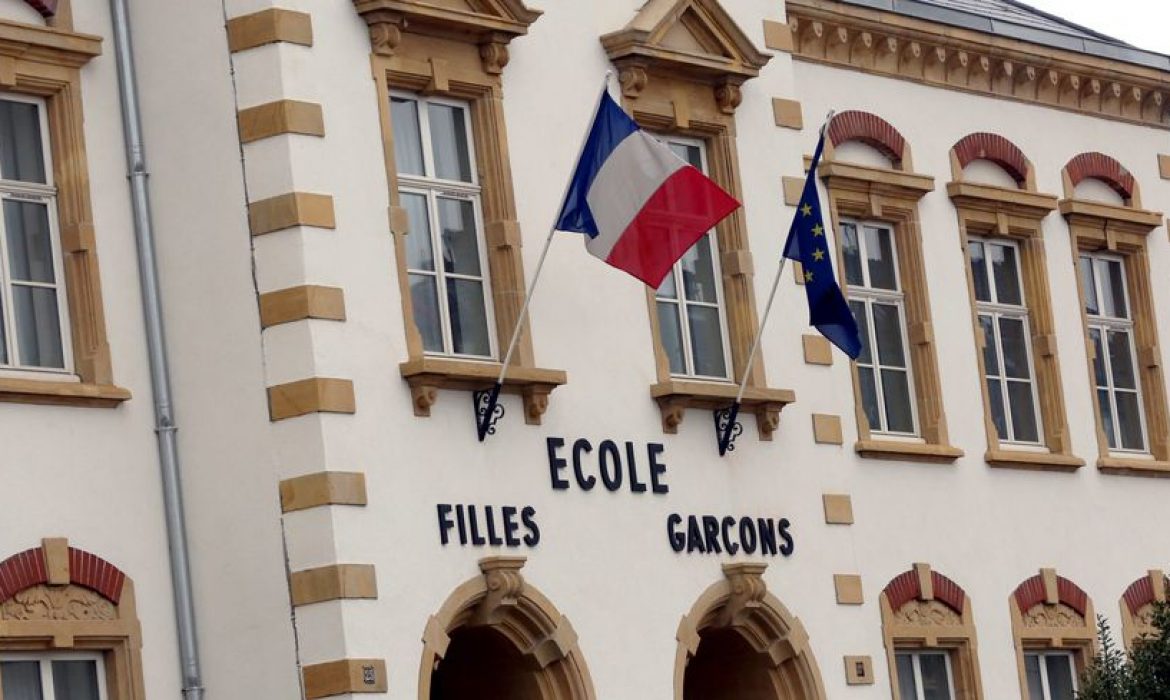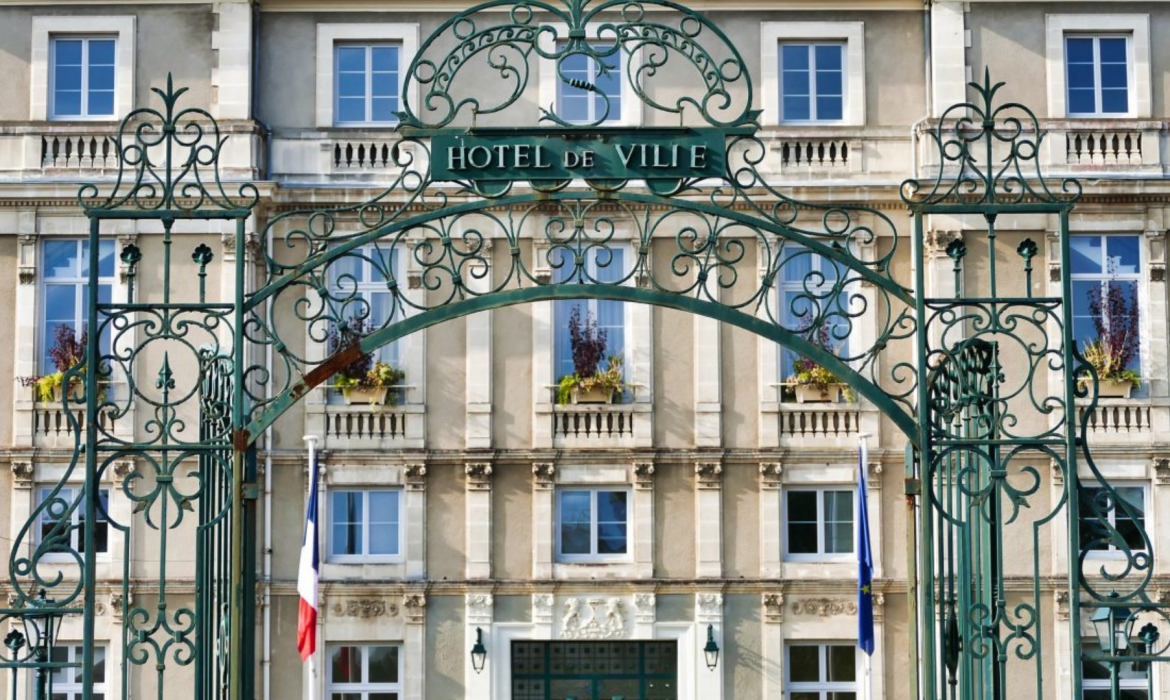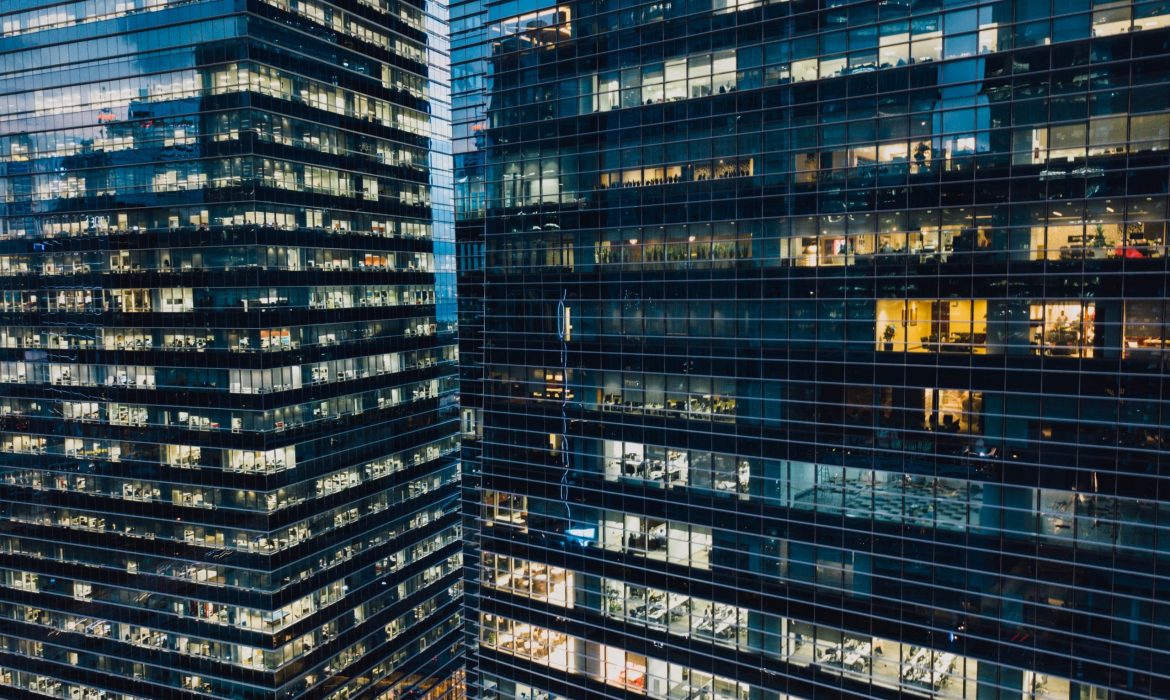One out of every five liters of drinking water lost in France!
Technologies: light dimming and user experience
As part of their LED projects, many companies have implemented dimmable lighting, thanks in particular to DALI technology. Beyond the energy savings generated by LED implementation, how far is it possible to push the technology, particularly in terms of occupant comfort and experience?
What is dimming?
Dimming involves modulating the flux of a light source (a group of lamps, for example) using a control device. The more sunlight there is, the more the system will be able to reduce lighting from interior lamps, while maintaining the same level of light throughout the day.
Lighting control for energy savings
A system that modulates lighting intensity according to the real needs of a building’s zones naturally generates energy savings: less lighting means less consumption.
However, maximizing the return on investment from installing such a system depends on several parameters:
- Some buildings will benefit more from the technology than others, due to their exposure to light, glazed surface, the light potential of each space, etc.
- The first step is to replace all lamps with LEDs, which consume up to 80% less electricity than traditional incandescent bulbs.
- This system is not sufficient on a building scale. It is essential to invest in intelligence capable of controlling the system to automatically set the desired brightness remotely.
- Although dimming systems can generate energy savings, the biggest single item of energy consumption remains heating.
- The occupant experience at the heart of energy considerations
Few people approach the subject of intelligent buildings from the angle of comfort and thermal conditions. The question of heating is most often associated with this notion of comfort, but it is not the only influencing factor. Lighting in a commercial building has a major impact on the experience and feeling of occupants.
Exposure to low light levels during the day and bright light in the evening can disrupt the biological clock.
Some studies even point to the consequences for sleep quality and quantity, and thus a source of mood alteration, stress and, ultimately, a cause of poor health. Conversely, a well-lit environment can improve performance and help you enjoy a deeper, more restorative sleep. A virtuous circle of productivity, energy and well-being.
In a study conducted by the Lightning Research Centre, participants working in five American office buildings wore light meters in summer and winter to assess their exposure to light. They also recorded their sleep times, waking hours and mood. People who were exposed to bright light between 8 a.m. and 5 p.m. reported less sleep disturbance and depression.
Good lighting also eliminates glare and shadows, reducing the risk of falls. This is particularly critical in hazardous work environments where health and safety are paramount, where slips and trips account for around a quarter of serious injuries.
Finally, controlling lighting by modulating its intensity also makes it possible to create different atmospheres at different times of day or in different areas. In retail, for example, lighting is an important part of the concept, enabling products to be showcased by zone.
At Eficia, we do all this, and even more, by taking technology a step further to optimize day-to-day use of lighting and other energy-consuming equipment.
Track your gas consumption on the EFICIA application
It’s been 7 months since we launched the first professional energy monitoring application, 100% free of charge, designed to democratize energy data by providing a decision-making tool for individuals, companies and local authorities wishing to reduce their energy consumption.
Until now, you’ve been able to get an overall view of your electricity consumption, track performance indicators, analyze trends in your energy performance and compare sites of the same type with one another.
Now you can do the same with your gas consumption!
In this new version of the application, and in addition to the functionalities for electrical data, if you have a communicating gas meter, you’ll be able to :
- Add as many meters as you like and view up to 3 years of data;
- View technical and contractual data for each of your meters (tariffs, remote meter reading, etc.);
- View gas consumption curves for each meter on your site in individual or global view;
- Analyze the impact of outside temperature on your gas consumption, thanks to juxtaposed curves.
- For the majority of gas meters (those with daily data publication), you’ll be able to view your consumption data on D+3. This concerns over 11 million meters in France!
Add your gas meters to the app now and start your free analysis here 👉 https://app.eficia.com/
The energy market in France and Europe: crisis creates opportunity
Let’s face it, we’re living through an unprecedented energy war. Whereas electricity was half as expensive in France as in Germany or Italy before this inflationary context, the country is now experiencing an unprecedented rise in prices. In fact, it is facing problems caused by past political choices that were cruelly short-sighted. In short, the current crisis is seriously shaking things up. History has shown, however, that it’s in the most extreme episodes that the best can emerge. If the situation is set to last, a way out towards a new energy production model is possible.
An unavoidable situation
Despite the extension of the “tariff shield” designed to limit the rise in consumer costs, the crisis is here to stay: at the end of August, the wholesale price of electricity in France reached 1,000 euros per megawatt-hour (MWh). This surge, which affects Europe as a whole and does not spare France, is due to a combination of factors: a strong economic and industrial recovery, the war in Ukraine, which has had an impact on natural gas imports and hence on electricity prices, and last but not least, the state of the nuclear fleet (only 24 out of 56 reactors were operational on September 1), forcing France – usually self-sufficient and even an exporter – to obtain supplies from the European market.
Whatever happens, even if France regains its competitive edge and prices come down in 2024/2025 and not before, they will never reach pre-crisis levels. At best, they will plateau at around 200 euros (versus 50 in 2020). But this is only one aspect of the crisis, not to mention the tensions on the power grid that RTE believes are more than likely. What about industrial competitiveness? In the short term, this situation presents risks. There are several possible outcomes, starting with the least desirable of all: closures… Few companies will decide to invest massively in energy-saving measures. Most will opt to relocate, at best partially, or raise their prices. Wouldn’t this situation make us fully aware of our dependence on fossil fuels or on the “cheap” energy to which France has become accustomed thanks to its aging nuclear fleet?
A way out towards independence and exemplarity?
For several months now, renewable energies have been seen as resources to be exploited on a large scale. With photovoltaics and wind power, the cost of electricity is around 50 euros (but this is intermittent energy). Producing more from renewables would therefore be more advantageous, and would encourage the expansion of a virtuous circle. For this to happen, however, the electricity market needs a thorough overhaul. Governments are beginning to take a stand on this issue. “The electricity market no longer works (…). It needs to be adapted to the new reality of dominant renewable energies (ENR), because [it] was designed twenty years ago when ENR were marginal”. There has also been an acceleration of announcements on their part to facilitate the emergence of renewable energies, such as PPA contracts (mechanical guarantees with minimum prices).
To help reduce carbon emissions in the long term, there are other solutions: heat pumps, which are gradually replacing gas-fired boilers, and intelligent control systems that will make energy systems more efficient. But there are also projects dedicated to virtuous innovation, such as the smart grid applied to electric vehicles (the battery in an electric car will be used to power a building when it is not in use). Or hydrogen, to store energy produced from renewable sources. Combining these two resources would make us ultra-competitive and, above all, completely independent. What’s more, it would turn the current energy and economic model on its head.
Europe is entering a crisis and must prepare for some complicated years ahead. But it can emerge a winner and become the leader in decarbonization. Set as an example on the international stage, it will have the means to help developing countries and change the face of the world: oil will no longer have the monopoly.
Source: Electricity market reform in Europe: when CAPEX dethrones OPEX | Connaissances des énergies
PPA: Power Purchase Agreement, literally “contrat d’achat d’électricité”, is a long-term contract for the delivery of electricity between two parties, generally a producer and a purchaser of electricity (consumer or trader). (Source What is a Power Purchase Agreement (PPA)?)
By 2022, EFICIA will have achieved savings equivalent to the consumption of a city like Avignon.
Another milestone achieved!
By 2022, EFICIA will have further increased the energy savings generated on behalf of its customers to 200GWH, the equivalent of a town of 90,000 inhabitants.
And while public authorities and major market players are busy looking for solutions to limit the impact of energy prices on their portfolios, our customers and partners have already been engaged in the energy transition for nearly 10 years.
Our leitmotiv: to put our energy into helping you save yours.
Our method
A virtuous, 100% integrated system, based on the processing of external data, analysis of technical characteristics, occupant usage and, of course, energy intelligence. An innovative, global solution that continuously maximizes your energy consumption to make it sustainable, while simplifying the technical operation of your facilities and optimizing the comfort of your occupants.
EFICIA’s energy management objectives
Aim for energy sobriety by limiting consumption as much as possible. On October 6, 2022, the French government unveiled its plan to reduce the country’s energy consumption by 10% by 2024. To achieve this goal, the plan proposes 15 key measures. EFICIA’s solutions fit perfectly into this framework.
Avoid, reduce or offset environmental impacts by reducing energy consumption. Our solution helps to reduce building emissions to combat the threats of climate change facing our society.
Help cushion rising energy prices. In the current context of rising energy prices, companies are looking for new solutions to limit their impact and reduce their bills.
Meeting regulatory requirements. In France, a number of regulations are already in force, notably the Tertiaire and BACS decrees, which stipulate a 60% reduction in the energy consumption of tertiary buildings by 2050. For its part, the BACS decree requires the implementation of an energy management solution like EFICIA’s by 2025.
Integrate issues related to well-being in the workplace by improving thermal comfort and productivity for occupants (employees, customers, service providers).
Have the French suddenly become more virtuous?
All opinion polls show that the French, and especially the younger generations, have fears about the future of our world, especially on ecological issues. Indeed, according to a survey by LCI, eco-anxiety is gaining 74% of French people, 85% of them fear the appearance of phenomena related to climate change in their region within 5 years. We should therefore be able to rejoice at the announcements of RTE on the 8.5% decrease in our energy consumption, which the state has widely promoted.
However, can we consider that this decrease is attributable to a collective awareness of the issues and to profound changes in our uses? It is obvious that the impact of regulations that have become stricter in France with the tertiary decree is forcing a certain number of economic actors to take measures in favor of more virtuous practices. However, on a population scale, it is difficult to attribute these results to profound changes in our consumption patterns. The main reason for this decrease is directly linked to the energy crisis and the unprecedented increase in supply prices forcing many individuals and professionals to change their uses, creating operating risks for many small and medium-sized businesses. Government incentives have had little effect, even if public policies aimed at containing the effects of the increase can be seen as a valuable aid.
In France, the new construction standards for several years now have largely contributed to making our buildings less energy consuming. But what about existing buildings, which represent the majority of the stock? The evolution of awareness is a reality but it is slow and the means of action to fight against our energy drifts are still underdeveloped.
Changing our habits will therefore require education and the impact of each individual in this necessarily collective effort.
Beyond this generalized awareness, we are convinced that the modification of our uses must go through a reinforcement of innovation and technologies allowing better consumption. There is a lot of room for improvement and the implementation of more virtuous management rules is an obligation if we want to sustainably transform our approach to the challenge of the century.
The implementation of technologies and services that allow buildings to be less energy intensive is one of the keys. Some of the answers are already to be found in the ecosystem of innovative companies that are working every day to transform mindsets and habits, in particular through the implementation of tools that are often inexpensive and non-intrusive.
As the song says, “for the young people of the year 2000, it’s not the same deal anymore” and the state will have to participate in this democratization and participate even more in the promotion of existing solutions that have proven their worth in order to reach our sobriety objectives.
Territorial Communities: a complex building fleet facing the soaring energy prices
This winter, many communities have had to make decisions to deal with rising electricity prices: closing swimming pools and museums, reducing Christmas decorations, lowering temperatures in schools, etc. And most communities have had to renegotiate their energy contracts, becoming aware of the rise and volatility of energy prices, seeing their energy budgets increase four or fivefold.
“It’s a shame to see that this awareness of energy issues is the result of a budgetary rather than an environmental problem, but it’s no less important that this awareness has taken place,” says Alric Marc, founder of Eficia, a Frenchtech expert in energy management for tertiary buildings and local authorities recently referenced by the UGAP.
He continues: “These past few weeks have made us realize that local authorities don’t know what they really consume, or where their consumption comes from. A swimming pool does not consume like a town hall, nor like a school, etc. In a community, no building is running at all. In a community, no building functions like another, which makes energy management and control particularly complex. It is now essential that they take stock of how they consume energy and monitor their consumption on a daily basis.
Alric Marc deplores the fact that the actions taken until now to reduce their energy budget and participate in the national effort have been “short-term solutions, even very short-term.
The objective now is to make these gains last, to make them accepted and above all to do them in a more intelligent way. Because closing a pool cannot be a long-term solution. On the other hand, we can make energy savings in the medium term by investing in switching public lighting to LED bulbs, replacing old oil-fired heating systems with heat pumps, etc. These are just examples, but I think that 2023 will be a year of strong investment by local authorities in energy solutions, whether for heating, lighting or regulation and intelligent energy management systems. And in the longer term, local authorities must implement a real energy management policy to achieve the 40% reduction in GHG emissions set by Europe. For a municipality, this also means making energy savings in its building and vehicle fleets. Internal teams will have to take charge of the energy issue.
To go further, solutions are already available to reduce their energy bill and impact, and new jobs dedicated to energy could also soon be created within communities.
Energy crisis and extended business support: between good news and long-term risk
The amount of aid and the ceilings it can reach (raised to 4, 50 and 150 million euros) vary according to the company’s situation.
The companies concerned are large energy consumers that have experienced an increase in the cost of supplying natural gas, electricity, heat or cold produced from natural gas or electricity between March 2022 and December 2023 and whose activity is particularly affected. In concrete terms, their energy expenses must be equivalent to at least 3% of their turnover in 2021, and their bill must have risen by more than 50% compared to that year.
Why is help with soaring prices important for companies?
Businesses are paying for the surge in energy prices between July and October 2022, the period during which professionals were renegotiating their annual contracts with their suppliers. From January onwards, businesses will have to face heavy increases in their bills and in this context, the aid granted to businesses is essential and its extension until December 2023 is good news.
Electricity prices on the spot market are much lower than those we experienced at the end of 2022, while paradoxically, companies find themselves at the beginning of the year with a much higher bill that does not reflect the current price of energy. This situation penalizes the companies by increasing considerably their operating expenses and posing for some a risk of deficit and worse for some.
A situation that can be avoided.
Without the aid and the progressive rebalancing of our production capacities, many industries would have closed or relocated to avoid the galloping inflation of energy prices in France. The measures announced by the state are therefore decisive in the management of this crisis and to ensure the maintenance of many activities on our territory.
Is this aid sufficient and fair?
Nevertheless, it is possible that the conditions for obtaining this aid will exclude a large number of companies which, due to the threshold effect, risk losing a lot of money. The question of company size creates a sometimes unfair system for benefiting from a regulated tariff, which makes it possible to allocate aid unfairly, even though the energy needs and expenses are the same.
Shouldn’t these subsidies eventually disappear?
The fact that the aids are not automatic and that there are steps to follow and conditions of attribution remains realistic because it is fundamental that everyone becomes aware of the cost of energy. As we have seen, when we make an effort and companies and individuals work together, it is possible to generate energy savings. According to RTE, our collective efforts have paid off in the last months of 2022 (about 9% savings in a few weeks) and this, without making investments, only by changing our uses. What is regrettable is that once again we had to react to the financial risk and not to the common good and environmental issues.
Nevertheless the permanent aids are a risk that could create bad habits. Energy has a cost but above all an impact on the environment and it is on this level that we must change our habits. We have to get used to having to pay higher energy prices and, in the end, the subsidies will have to give way to investments turned towards less polluting uses and quickly less subsidize CO2 emitting energies which have an economic blow and an ecological impact which is no longer acceptable.
Santa, you too can save energy!
Santa Claus makes all year long and delivers on December 25th all the Christmas toys to all the children in the world. That’s a lot of money for one person who manages thousands of buildings and elves! How much do you think he spends on energy bills and what can he do to reduce his impact on the environment?
Since the transportation of these toys to the children is done by magical reindeer, we will only count the manufacturing of the toys, not the transportation.
✅ The toy market in the world represents about $105 billion (according to Statista) of which 40% are dedicated to Christmas toys (according to Toy Market) – $42 billion.
✅ Let’s assume that the price of energy in the manufacture of a toy represents 5%: Santa’s annual energy bill is therefore $2.1 billion.
✅ Since the toy manufacturing process takes place in buildings around the world with lighting, heating, air conditioning and ventilation, it would be possible without any problem to control them and generate 20% energy savings… about $420 M in savings per year!
And reduce your carbon impact
✅ Santa’s energy bill being 2.1 billion dollars per year and 1 MWh = 150 dollars: Santa would therefore consume 14TWh of energy to make all the Christmas toys.
✅ And 1 MWh = about 200 kg of CO2 on average, so Santa’s toy making would weigh in at 2.8M tons of CO2!
✅ And, by controlling its buildings, EFICIA could have made it reduce its environmental impact by 20% by reducing its energy consumption.
🎁 That is the equivalent of a city of about 56,000 inhabitants (1 average French person emits about 10 tons of CO2/year)
To Santa and all the elves who make toys for children all year round: we can help you generate energy savings without disrupting your business.
EFICIA is now referenced in the UGAP multi-publisher catalog!
EFICIA is now referenced via SCC by the UGAP and its building energy management solution is available in the UGAP multi-publisher catalog.
This referencing is a new step in EFICIA’s development strategy and its ambitions to continue its expansion and increase its network of partners.
What is UGAP?
UGAP is a public industrial and commercial establishment (EPIC) placed under the supervision of two ministries (Economy and National Education). UGAP is a French public purchasing center and is the main organization to perform this function.
Because of its status as a central purchasing agency and because it operates on a purchase-for-resale basis, UGAP allows its contract holders to address the entire public procurement market through the signature of a single contract and to benefit from a reduction in their administrative, commercial and financial costs.
Why go through UGAP for a public contract
Going through the central purchasing office allows you to benefit from certain advantages:
Simplification of public procurement: UGAP takes care of the execution of orders and the relationship with suppliers, thus reducing the costs of procedures, deployment and management.
Legal security: the regulations relating to public procurement are respected
An immediate purchase: the public purchaser is exempt from advertising and competitive bidding procedures, regardless of the amount of the purchase
Contracts are notified
The central purchasing office provides a tool for making estimates and orders, and for tracking them online
Why is EFICIA referenced with UGAP?
The listing in the UGAP directory is above all a mark of confidence, and above all makes energy management services accessible to local authorities.
The UGAP allows actors like EFICIA to access the entire public order via a portal and through the signing of a single contract and to benefit from a reduction in their administrative, commercial and financial costs.
The energy efficiency plan for your buildings in 3 steps
How can companies mobilize for energy sobriety and efficiency with simple and immediate actions?
EFICIA has been working with professionals for many years on these issues and now offers you – while building your own longer term investments plan – a special anti-waste checklist for commercial buildings for this at risk upcoming winter.
Actions that your technical team can implement
- Limit heating to 19° or 18° (and even 17° Ecowatt).
- Control your heating according to the weather, activity schedules and the thermal inertia of the building. Example: early start and stop in the morning and stop at 5:00 p.m., on working/openning days only.
- Condition the air renewal according to the air quality only and stop it during the closing hours.
- Change the lighting that is not yet LED.
- Install presence sensors to control lighting in the lobby/reception, break and passage areas.
- Limit lighting between 8:00 a.m. and 1:00 p.m. in particular (which are the peak hours of the day) and until nightfall.
- Turn off interior lighting in buildings when they are closed and reduce exterior lighting on buildings, especially for advertising.
- Automatically turn off lights 3 hours after sunrise in naturally lit rooms.
- Install power strips with switches for all workstations and plug in devices that remain on standby (screens, chargers, individual ECLs, wifi relays, etc.).
- Turn off the wifi when the offices are closed.
- Limit the amount of equipment and avoid oversizing it (number of screens, size of these screens, power of the computer equipment compared to the need…)
Recommendations to make to your employees
- Turn off your computer and phone at night.
- Turn off the power supply of your workstation every evening when you leave.
- Clean up your mailbox every month.
- Reduce or turn off non-essential audio-visual systems, such as projectors or screens in reception areas or cafeterias during peak hours (8am-1pm & 5pm-8pm).
- Favour soft mobility or public transport.
- Do not charge your electric vehicle during peak hours (between 8:00 am and 1:00 pm and between 5:00 pm and 8:00 pm) and use off-peak hours (between 10:00 pm and 4:00 am or on weekends).
- Limit the use of the elevator when possible.
- Dress warmly in winter.
- Close doors to prevent heat loss or heat gain.
Guidelines your management can follow
- Gather employees who work in open spaces to free up areas that should not be heated or lit on slow days.
- Organize an energy saving contest between the different offices of the company.
- Raise employee awareness of energy efficiency issues through regular educational messages.
- Organize work to facilitate employee commuting outside of peak traffic hours whenever possible.
- Sourcing suppliers and partners locally in order to reduce the number of kilometers traveled by products, among other things.
- Give preference to reconditioned equipment (computers, telephones, etc.).
- Raise employee awareness of eco-driving and offer courses and training.
- Pooling and limiting meal deliveries by opening a Canteen 2.0.










